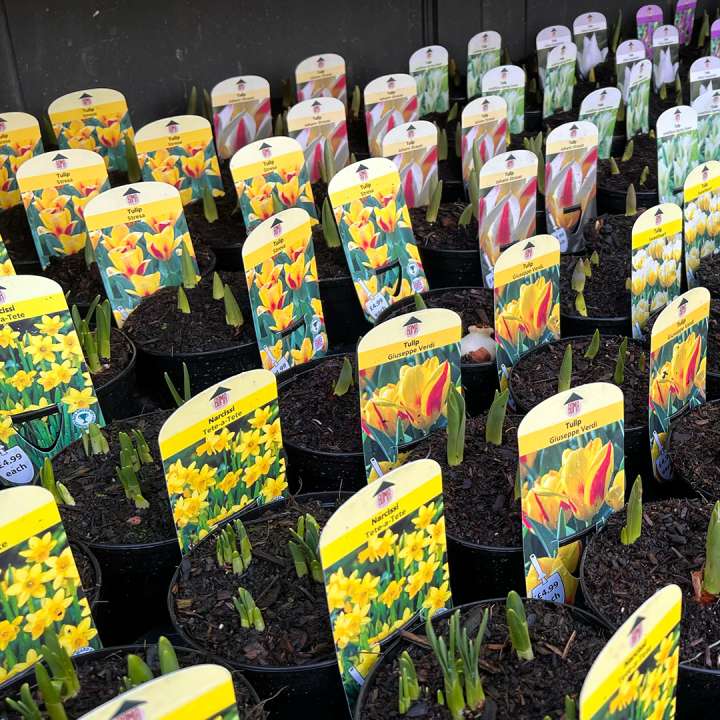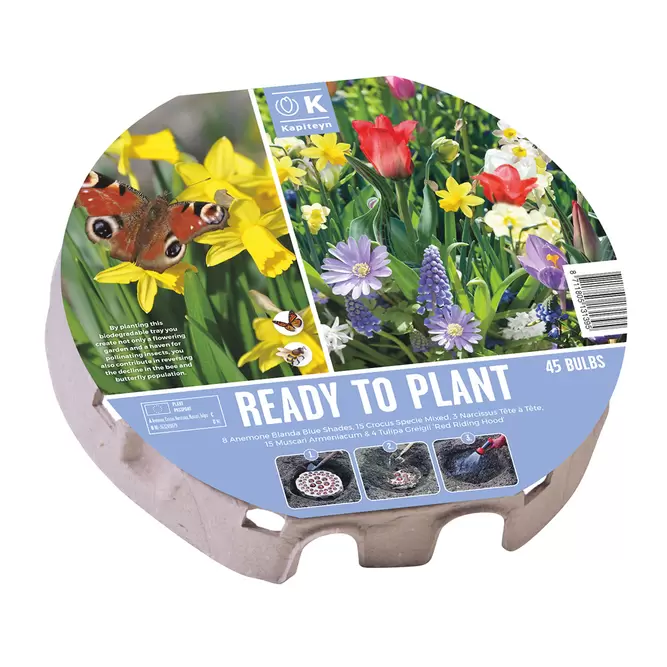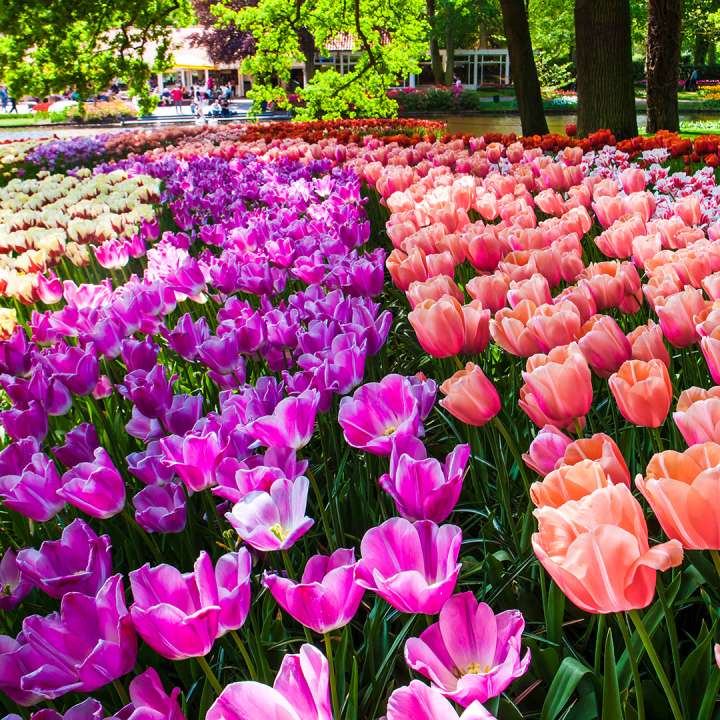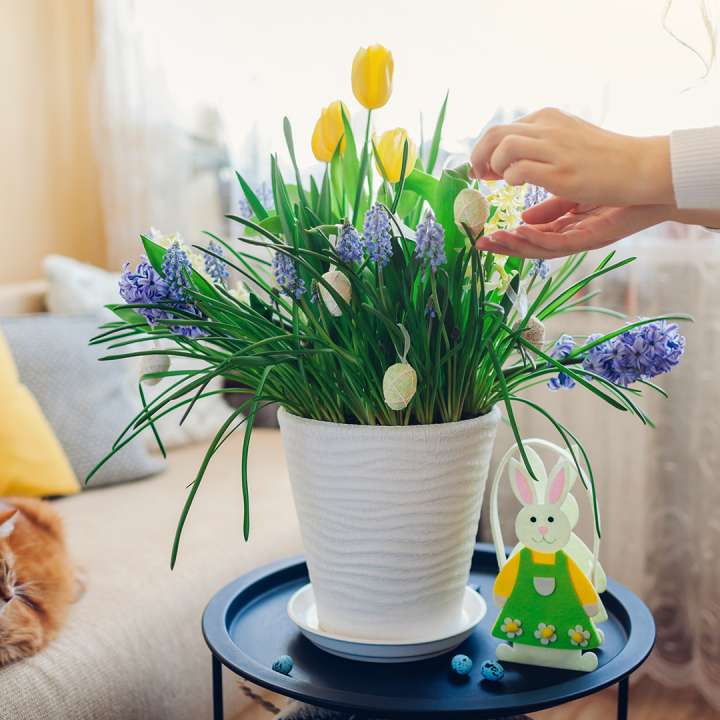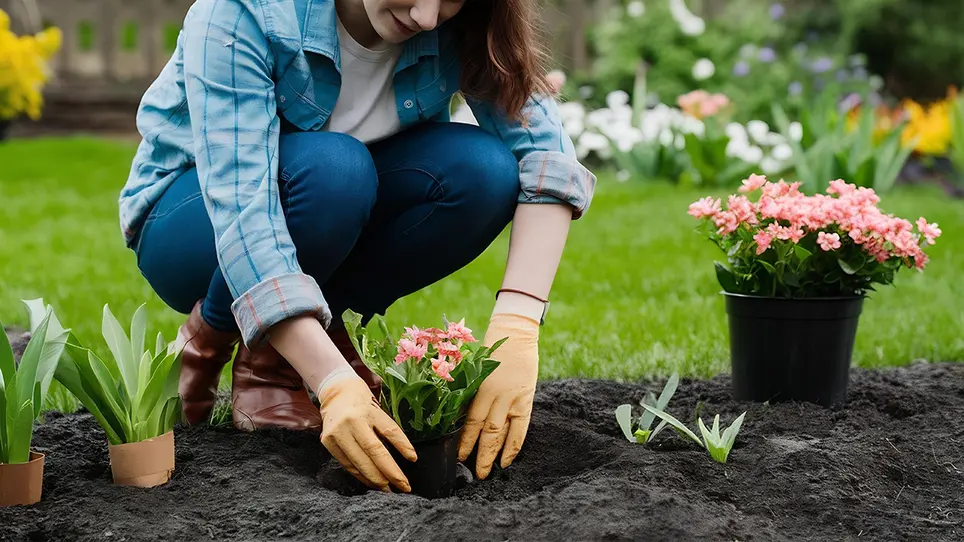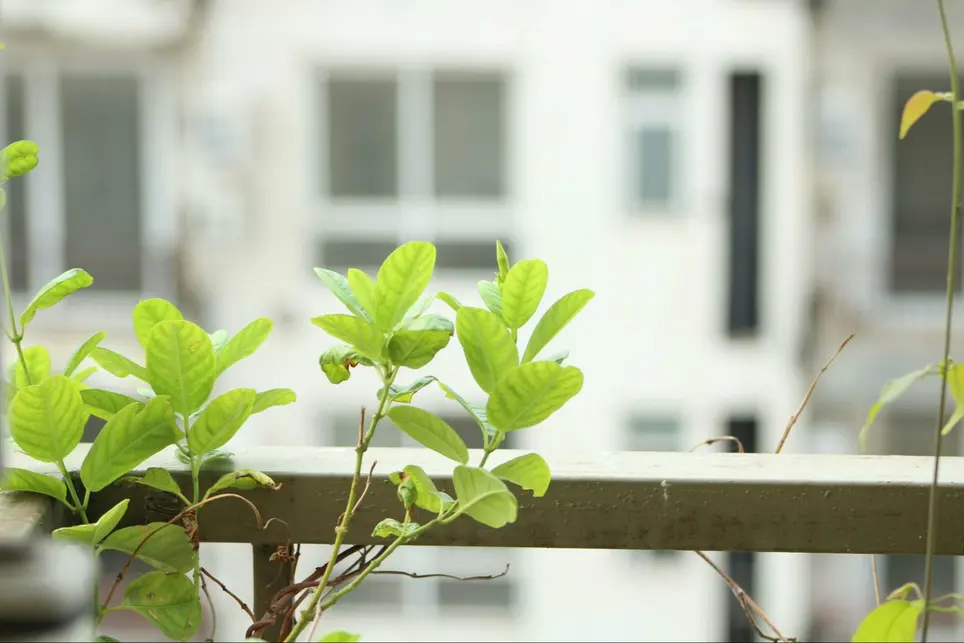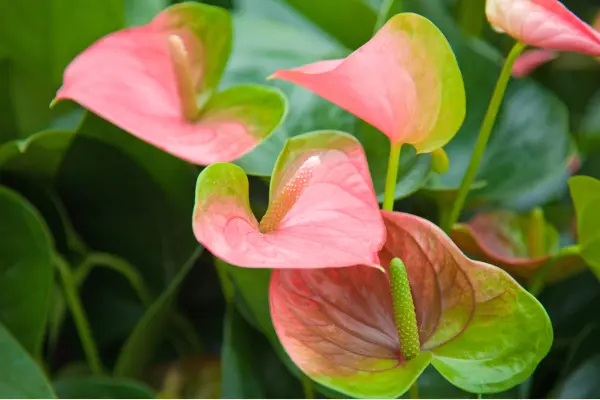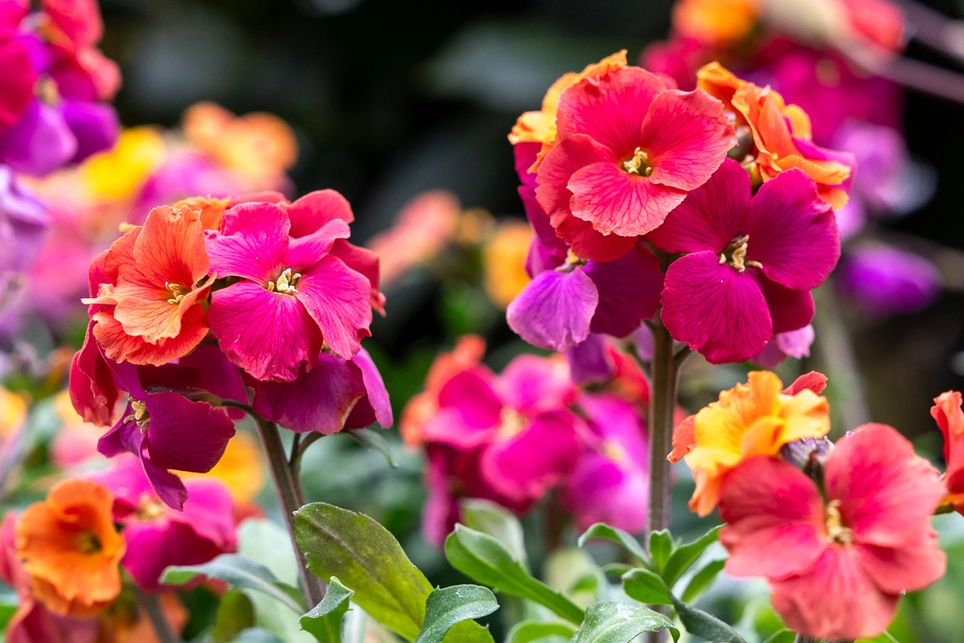![January is the time for potted spring bulbs [10 Tips for Sensational Spring Flowers]](/files/images/news/january-is-the-time-for-potted-spring-bulbs-10-tips-for-sens-1200x675-63b7ff11238c8_s.webp)
A sure sign that signals the start of the spring season is green shoots of bulbs popping their heads through the soil in February. There's the excitement of knowing your garden will be exploding with colour in just a few weeks. It's the perfect time for potted spring bulbs.
With proper planning at this time of the year, you can have a colourful display from flowering bulbs for months to come.
1. Try container-grown potted bulbs
Superb for creating long-lasting, colourful displays, you can plant container-grown bulbs with different textures and heights.
For best results, plant Tulips in layers choosing varieties that flower at different heights for a more extended display in your containers at home.
Combining bulb species, such as Tulips and Forget Me Knots, makes a long-lasting display for the Spring.
Other stunning combinations include Dwarf bulbs such as Iris reticulata sp. and Narcissus' Tete-a-tete',
2. Naturalizing smaller flowering bulbs
Planting smaller flowering bulbs in their natural surroundings works well, transforming the landscape beyond imagination.
Eranthis hyemalis, Hyacinthoides non-scripta (Bluebells), Galanthus sp., Crocus sp, Fritillaria meleagris, and Chionodoxa forbesii are but a few ideal natural bulbs species for lawns or around the bases of trees in your garden at home.
3. Planting bulbs in swathes and groups
Along the front of mixed borders, plant bulbs in swathes and groups.
Planting Tulips and Narcissus in large swathes within lawns or throughout mixed borders can create eye-catching displays.
Alliums on mass and small Crocus swathes in the lawn are easy combinations for a long season of interest and create an outstanding garden display.
4. Cut flower displays in your home
There is nothing like the feeling and joy of creating colourful displays in your home with flowers fresh from your garden.
Use Tulip's in Spring or Gladiolus and Dahlia's in summer. They're easy to grow and superb varieties for cut flower displays that paint your home with colour.
Most species of bulbs will flower for 2 to 3 weeks in Spring. You can extend the season by planting a variety of bulb types that bloom at different times.
5. Spring Bulbs Life Cycles
The following table lists Spring bulbs available at The Boma with an ideal flowering period
|
Type |
Flowering period |
Duration of blooms |
|---|---|---|
|
Tulipa' Little Red Riding Hood' |
Early March |
2 to 3 weeks |
|
Tulipa White Marvel |
Late April |
2 Weeks |
|
Tulipa Queen of the night |
Mid May |
3 weeks |
|
Tulipa Black Parrot |
Early May |
2 weeks |
|
Tulipa' Candy prince' |
Late April |
3 weeks |
|
Narcissus' Minnow' |
Late March |
3 weeks |
|
Narcissus' Pipit' |
Early April |
3 weeks |
|
Narcissus' February gold' |
Late February |
3 weeks |
|
Narcissus' Sailboat |
April Late |
3 weeks |
|
Narcissus' Baby Moon' |
Late March |
3 weeks |
|
Hyacinths sp. |
March |
4 weeks |
|
Alliums sp. |
June |
4 weeks |
|
Fritillaria meleagris |
March |
2 Weeks |
|
Galanthus sp. (Snowdrops) |
February |
4 weeks |
|
Iris reticulata sp. |
February |
2 Weeks |
|
Narcissus ‘Tete-a-tete’ |
Early March |
3 weeks |
|
leucojum aestivum |
May |
3 weeks |
|
Fritillaria imperialis |
April |
2 weeks |
|
Camassia leichtlinii |
May |
4 weeks |
|
Hyacinthoides non-scripta (Bluebells) |
May |
3 weeks |
|
Eranthis hyemalis (Winter Aconite) |
Late January to early February |
2 weeks |
|
Scilla peruviana |
Late May to June |
3 weeks |
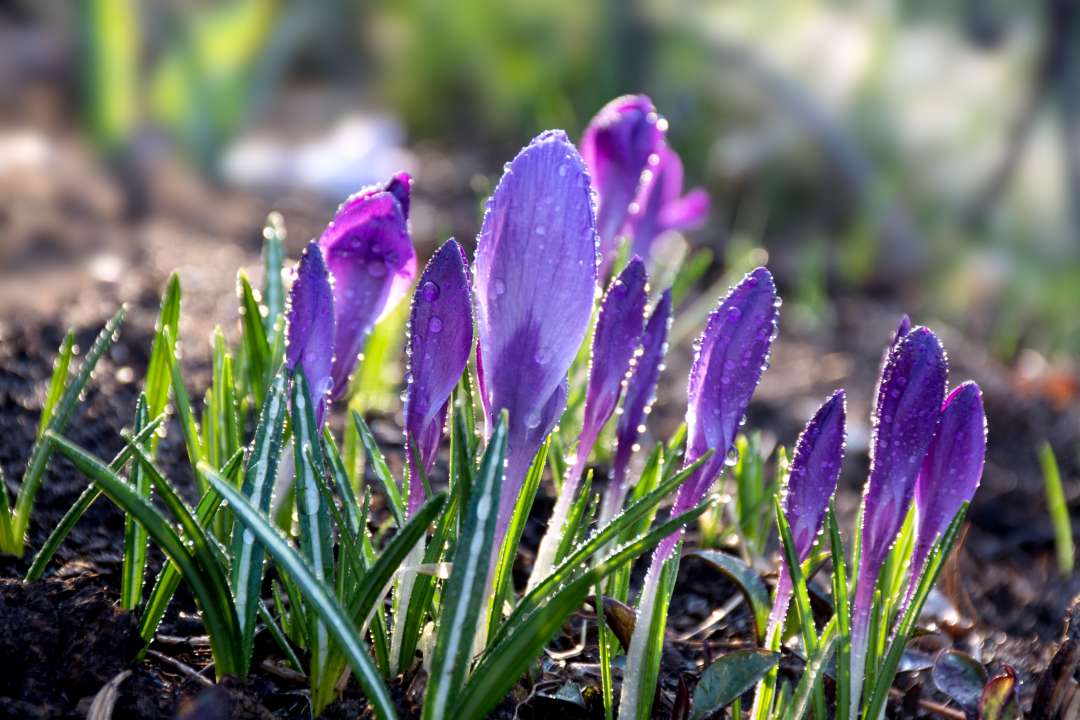
Want to speak to the Boma Team about planning your garden?
6. Combinations of spring bulbs for eye-catching displays
Combinations of bulbs can include Tulips, Narcissus, Snowdrops, Alliums, Hyacinth, Muscari, and Leucojum. Eranthis hyemalis, Scilla peruviana
Following are The Boma's suggestions for top bulb combinations that will wow visitors to your garden
|
Combination Type |
Bulbs |
Planting Location Ideas |
|---|---|---|
|
Black & White Chic |
Anthriscus sylvestris planted with 'Tulip Black parrot', Tulip' Queen of the night' and Tulip' White Triumphator', Allium Nigrum, |
Beds and borders Or even a shady garden corner |
|
Modern tones |
Narcissus' Tibet', Muscari' Grape Ice', Tulipa' Queen of the night', Allium sphaerocephalon |
Large Containers |
|
Purple Revenge |
Narcissus' Bridal Crown', Camassia leichtlinii' Alba', Allium' Purple Rain', Allium 'Violet Beauty' |
Beds and borders |
|
Burgundy Shades |
Scilla Peruviana, Allium ascalonicum, Allium sphaerocephalon, Knautia macedonica, Camassia cusickii, Sanguisorba menziesii |
Beds and borders |
|
Monet's Passion
|
Tulip' Princess Irene', Narcissus' Avalanche', Tulip' Paul Scherer', Fritillaria persica |
Containers |
|
Visions of White
|
Tulip' Green Star', Narcissus' Thalia', Tulip' White Triumphator', Myosotis alpestris (White Forget Me Knot) and White Wall Flowers
|
Large containers |
|
Pink Lucid Dreams |
Narcissus' Mount Hood', Tulip' Kings Blood', Tulip' Whispering Dream', Narcissus' Bridal Crown'
|
Mixed in with bedding plants in a planted border |
7. How and when to plant
Plant bulbs in autumn from October to December and Pre-grown Potted Bulbs from January to March.
Always add plenty of grit and bulb fibre to your garden soil and containers when planting any bulbs, helping to improve soil structure and drainage.
Tulips thrive and flower in well-drained sandy soil. That's why soil structure is essential, as the sprouting bulbs are susceptible to a pathogen called 'Tulip Fire,' which thrives in poorly drained and heavy clay soils.
If naturalizing bulbs in lawns, a long-armed bulb plant can save you time and stress. Designed to be pressed down, place the potted bulbs or loose bulbs in a deep hole by removing a cork of soil. Firm the soil around the bulbs once you've set the plant in the spot.
When planting loose bulbs, scatter them and plant them exactly where they land for the natural look. Try to avoid planting bulbs in straight lines or squares.
Plant the bulbs at various heights for containers with potted or loose bulbs to create different layers for a dramatic relief effect.
When transferring Potted Bulbs to containers, make sure you plant the bulbs no deeper than the original container from which they arrived.
Always make sure the outdoor planters and containers have drainage holes, without which the bulbs will begin to rot in poorly drained soil.
When planting bulbs in borders in the garden, remember to mark the area with a plastic plant tag. That way, you'll remember where you planted them and avoid digging them up by mistake when they are dormant. Bulbs planted along borders will multiply and bulk up for many years to come.
8. How to care for your bulbs?
- Plant potted bulbs, matching the depth of the nursery container.
- Deadhead flowering bulbs such as Narcissus and Tulips, to stop the bulbs from wasting energy-producing seeds.
- Always allow foliage to die naturally, as mulch with nutritious leaves produces vital elements for the underlying bulbs.
9. Top tips for planting bulbs in containers
Before planting your bulbs, place the container in your desired spot, as the containers will be heavy after adding compost and bulbs
Consider how many bulbs you are planting in the container. We recommend planting 5 large tulips bulbs per square foot as an approximate guide.
The more bulbs you plant in the container, the more moisture the container will require, so make sure there's a balance between overcrowding and sparsity.
Consider Rain Shadow when locating your planters. If the containers are close to a building, they may have less exposure to rain.
A quality outdoor pot with a decorative design or authentic appearance makes a significant difference to the display. Consider colourful handmade glazed terracotta or matt handmade pots to achieve a different appearance.
Bulk up the Bulbs with feed. By feeding bulbs after flowering with Maxi crop seaweed feed, you can bulk up the bulbs for the next flowering season
Use an excellent loam-based compost in your containers, such as John Innes. Loam-based compost will retain moisture for a more extended period than peat-based varieties.
Place broken pieces of pot or croc at the bottom of the pot over the drainage hole to prevent packed compost blocking drainage.
10. Bulbs for a shady location
If you have a shady location in your garden, you can plant an excellent range of woodland bulbs that look wonderful in Spring, that enjoy partial and full shade.
|
Woodland Bulbs for Shady Locations |
Flower Type |
|
Erythronium' Pagoda' |
Beautiful dog tooth violets with delicate yellow flowers |
|
Anemone blanda' White Splender' |
Attractive white flowers with a yellow daisy centre |
|
Anemone blanda' White Splender' |
Attractive white flowers with a yellow daisy centre |
|
Scilla siberica |
Delicate heads of dark blue flowers |
|
Hyacinthoides non-scripta |
The native bluebell, an excellent woodland plant |
|
Tulipa' Spring Green' |
Beautiful large white flowers with a green tint |
To learn more about spring bulbs and how to plan your garden and containers, contact the team at The Boma Garden Centre.




